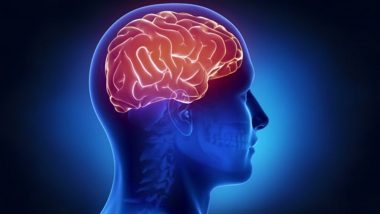Imagine you are drifting into peaceful sleep when you feel a weird feeling of worms crawling up your right leg. You get a little relief when you move it. But within moments, the same creepy-crawly feeling returns and you feel an urge to move your leg again. The sensation shows no signs of waning and before you know it, your right leg has kept you up till 4 am.
These are the most telling signs of restless legs syndrome, a common neurological disorder, which is characterised by an irresistible urge to move the legs due to strange sensations in the limbs. People who face this problem often find little or no sleep at night, because the strange feeling refuses to die down no matter how many times they move their leg.
What is Restless Legs Syndrome?
Restless legs syndrome is also known as Willis-Ekbom Disorder a neurological condition, which causes pricking, creepy-crawly sensations in the legs, usually at night when the person is at rest. The disorder has two forms: one, as a primary disorder independent of any disease and second as a symptom of another condition like an end-stage renal disease, iron deficiency or pregnancy.
The most distinct characteristic of the disease is an irresistible urge to move the legs, accompanied by uncomfortable sensations. The symptoms begin or worsen during periods of rest or inactivity. The signs are worsened in the evening or at night. The sensations begin when the person is at rest and are relieved when the leg is shaken or moved. People who experience restless legs syndrome describe these sensations as ‘crawling’, ‘creeping,’ ‘electrifying’, ‘itching’ or even ‘aching.’
Who is at Risk?
Restless legs syndrome affects both men and women of any age, but it’s seen more commonly in women. Older patients experience the symptoms more frequently and for a longer duration. Some people who experience the syndrome may have inherited. Restless legs are also commonly seen in pregnant women. An iron deficiency can also cause or worsen restless legs. In more severe cases, kidney failure, spinal cord conditions and nerve damage could also cause restless legs.
How Does it Affect Sleep?
The sensations associated with restless legs worsen during the night, especially when the person is trying to sleep. The constant discomfort caused by legs keeps the person up at night. Many find it difficult to initiate sleep in the first place.
Sleep disturbances at night adversely affect the quality of life in patients suffering from the syndrome. Sleep deprivation causes a host of other long-term health problems such as memory problems, diabetes, obesity, weakened immunity and high blood pressure.
How is Restless Legs Syndrome Treated?
Dopaminergic drugs are considered the first-line therapy for moderate-to-severe conditions. Benzodiazepines Opiates and Anticonvulsants are also used in the treatment. Some strategies can also help in lessening the symptoms of the disease like taking a warm bath before bed can relax your muscles, engaging in some brain exercises like reading or solving crossword puzzles will help or rubbing or massaging the site of the sensations.
(Reference: Effects of restless legs syndrome (RLS) on sleep)
(The above story first appeared on LatestLY on May 15, 2018 05:41 PM IST. For more news and updates on politics, world, sports, entertainment and lifestyle, log on to our website latestly.com).













 Quickly
Quickly





















